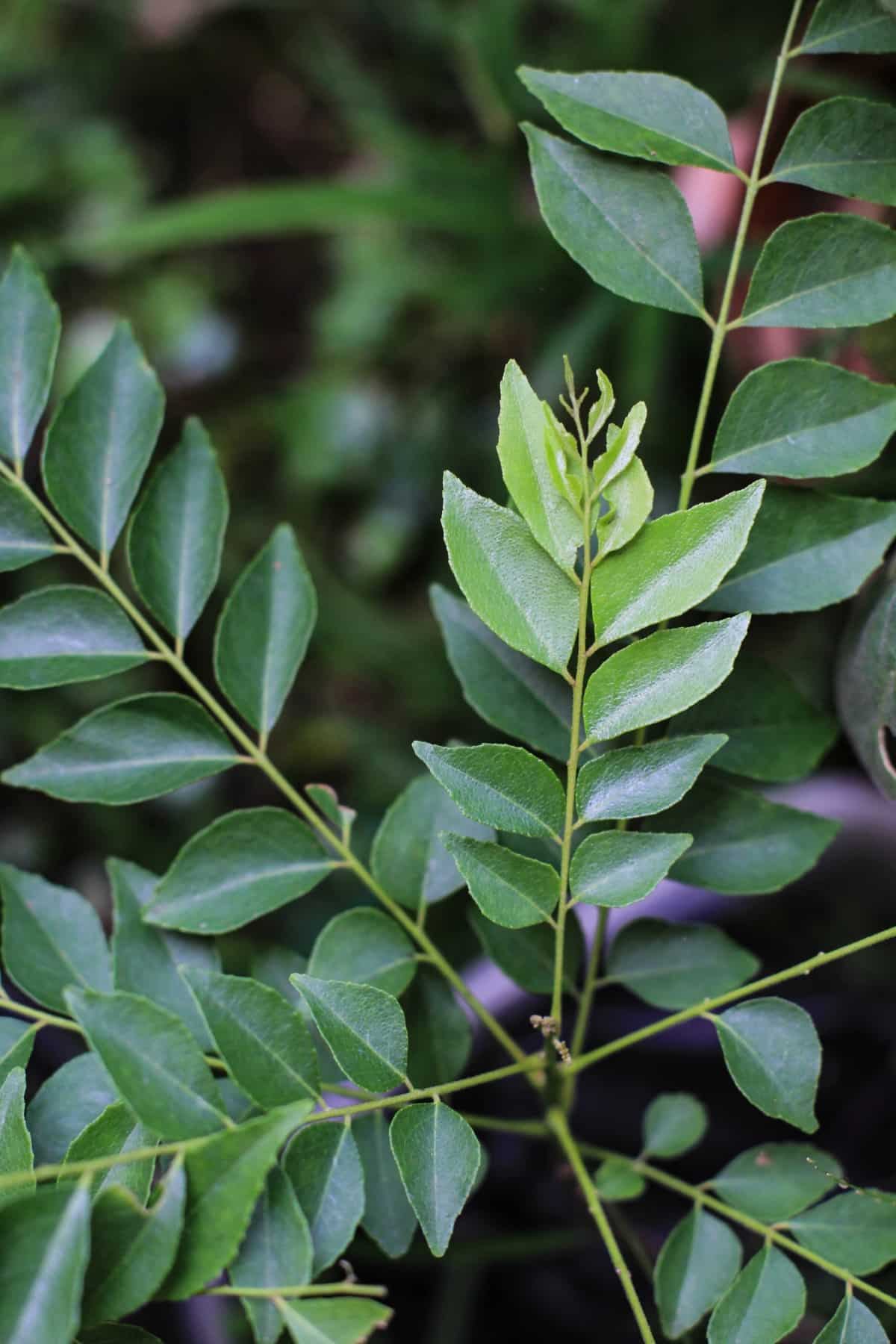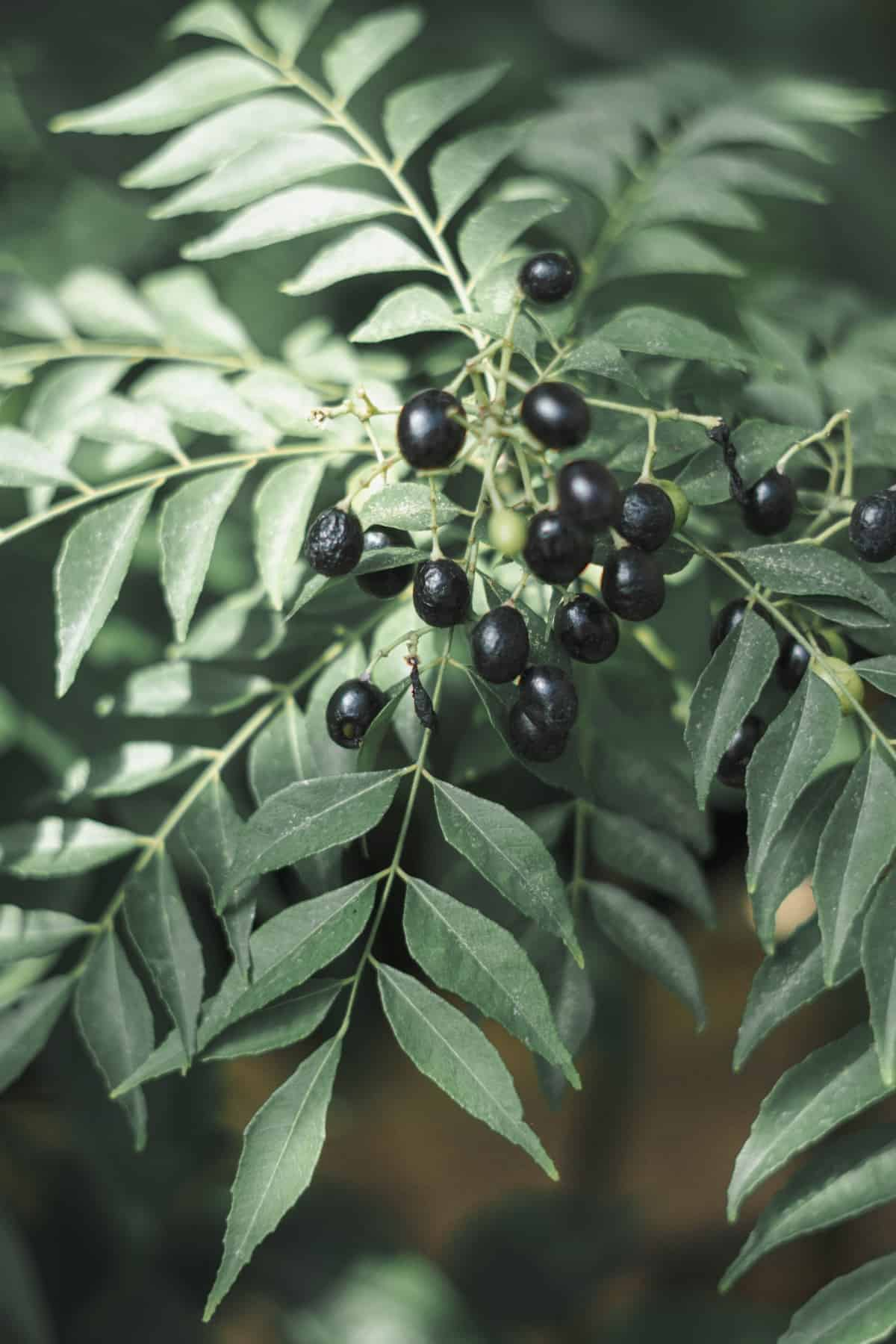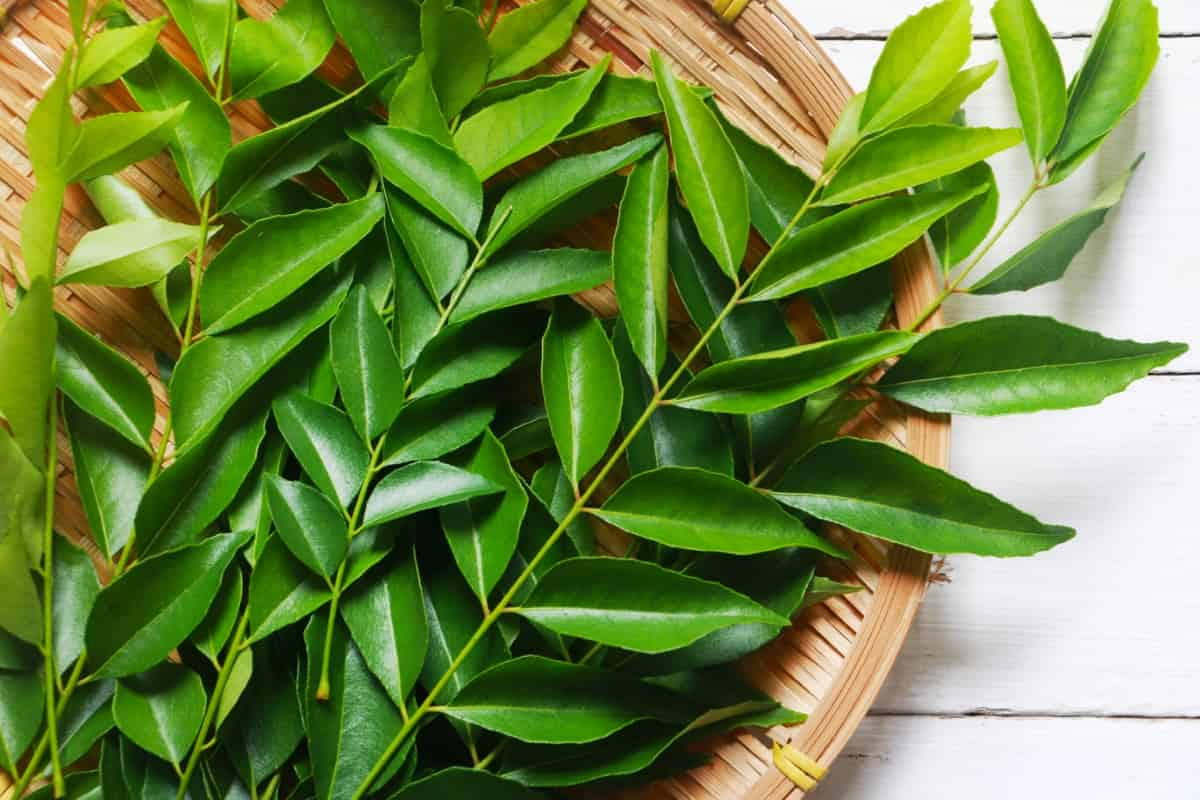The curry leaf plant is a popular herb used in Indian cuisine for its unique and aromatic flavor. Apart from being a culinary delight, this plant also offers significant health benefits due to its high nutritional value. Additionally, the curry leaf plant is easy to grow and maintain as it requires minimal care. Regular and homemade fertilizers play a significant role in promoting the growth of curry leaf plants.

Homemade Fertilizers to Make Curry Leaf Plant Bushy
The Best Time to Fertilize Curry Leaf Plant
Fertilizing your curry leaf plant is crucial to ensure it grows healthy. The best time to apply a curry leaf plant fertilizer is during the growing season, which typically falls between spring and summer. Using fertilizers at this time will provide the necessary nutrients for new leaves and branches to grow.
Tips for Getting More Branches on Curry Leaf Plants
- Make sure to prune your plant regularly. This encourages branch growth and gets more leaves for harvesting.
- Also, liquid fertilizer fertilizes your curry leaf plant every 3rd to 4th week. This will give it essential nutrients to grow faster and produce more branches. Fertilizing is also crucial in promoting branch growth.
- Planting the curry leaf plant on the ground instead of in a pot can also encourage faster growth and more branching. This allows the plant roots to spread out and absorb more nutrients from the soil.
How to Compost for Curry Leaf Plants to Encourage Bushier Growth?
- Composting is an excellent method to give your curry leaf plants essential nutrients. Collecting organic matter like vegetable scraps or garden waste. You can also add eggshells or coffee grounds rich in calcium and nitrogen.
- Next, layer the organic material in a bin or pile with some soil. This will help introduce microorganisms that break down the compost into nutrient-rich humus.
- To speed up decomposition and prevent odors, turn the compost to the plant every few weeks to aerate it. Also, keep it moist but not too wet, as excess moisture may lead to rotting instead of decomposition.
- After several months of decomposition, when the compost turns dark brown, and a crumbly texture is achieved, you can add it around the base of your curry leaf plant once a month during the growing season.
- Adding homemade compost helps retain moisture while providing important nutrients for the healthy growth of the Curry Leaf Plant, ensuring lush foliage all year round.
Banana Peel Compost for Curry Leaf plant
- Banana peel compost is an excellent natural fertilizer for curry leaf plants. It also helps to improve soil quality. Banana peels are rich in potassium, an important nutrient for healthy curry leaf plants.
- To make banana peel compost, chop fresh banana peels into small pieces and bury them carefully in the soil around the curry leaf plant. You can add other organic matter like leaves or grass clippings to enrich the soil further.
- As the banana peels decompose, they release valuable nutrients into the soil that your curry leaf plant can absorb through its roots. The result is stronger and healthier plants with more branches and leaves.
In case you missed it: Treating Dieback Disease in Neem Trees

How Do You Prune Curry Leaves to Promote Growth?
- Pruning is an essential part of promoting the growth of your curry leaf plant, and it’s not as complicated as it may seem. The first step in pruning your plant is to remove any dried or yellow leaves, which can be done by simply pinching them off.
- To encourage bushier growth, you should prune back the tips of the stems regularly. Prune just above a pair of healthy leaves or growth nodes. This will cause new branches to grow from that point instead of having one long stem growing taller with fewer branches.
- Regular pruning helps promote bushy growth for healthier plants with more robust foliage and better yields.
Homemade and Regular Fertilizers to Make Curry Leaf Plant Bushy Growth
- Applying homemade fertilizers like Buttermilk, Rice water, Asafoetida, Tea powder, Epsom salt, and eggshells, along with regular feedings of seaweed or fish fertilizer higher in Nitrogen (N) value, can significantly benefit the growth of curry leaf plants.
- The nitrogen (N) value is an essential nutrient for these plants, which can be increased by applying regular feedings of fertilizers. Blood meal fertilizer is one such option that can be used once in spring to boost plant growth.
- In addition to blood meal fertilizer, seaweed or fish fertilizer can be applied monthly to provide nutrients to the curry leaf plant. These organic fertilizers are rich in minerals and trace elements, which help in overall development.
- Apart from regular fertilization, homemade options like buttermilk, rice water, asafoetida, tea powder, Epsom salt, and eggshells are equally effective and safe for the curry leaf plant. These natural ingredients provide vital nutrients without harming the environment.
- Buttermilk is rich in calcium, while rice water contains starch that promotes healthy roots. Asafoetida acts as a natural pesticide against pests like aphids and spider mites. Tea powder contains tannins that protect plants from fungal diseases, while Epsom salt provides the magnesium required for photosynthesis.
- Eggshells contain calcium carbonate that helps neutralize soil acidity levels leading to better absorption of nutrients. These homemade fertilizers weekly will promote bushy growth and increase yield during harvesting season.
Tips to Make Curry Leaves Plant Bushy
- To make your curry leaves plant bushy, pruning is an essential step. This encourages multiple branches and results in more leaves for harvesting. Pruning involves removing the top portion of the stem and cutting off any dead or diseased parts of the plant.
- Using a nitrogen-rich fertilizer will help boost growth and promote more foliage on the plant.
- If you want faster growth, consider planting your curry leaves directly on the ground instead of in a pot. The ground provides more space for roots to spread, resulting in healthier and stronger plants.
- Plucking flower buds from the curry leaf plant can also boost its energy by redirecting its resources towards producing more branches and foliage rather than flowering. This helps create a fuller-looking bushy appearance while allowing optimal leaf production.
In case you missed it: 10-10-10 Fertilizer: How to Use in Your Home Garden

Conclusion
The curry leaf plant, or Murraya koenigii or sweet neem, is an aromatic and highly prized herb used in Indian cuisine. The curry leaf plant is a versatile herb with plenty of culinary uses and medicinal properties, making it a good addition to the home garden or kitchen. To ensure your curry leaf plant grows bushy and healthy, it’s essential to understand the importance of pruning and fertilizing regularly.
- Ultimate Guide to Ossabaw Island Hog: Breeding, Raising, Diet, and Care
- Ultimate Guide to Juliana Pig: Raising Facts, Size, Diet, Care, and Lifespan
- Raising Lleyn Sheep: Disadvantages, Price, Uses, Characteristics, and Care
- Ultimate Guide to Meishan Pig: Breed Facts, Breeding, Raising, and Care
- Ultimate Guide to Teacup Pigs: Raising, Diet, Lifespan, Cost, and Care
- Guide to Raising Poll Dorset Sheep: Facts, Profile, Characteristics, Uses, and Care
- Ultimate Guide to Bighorn Sheep: Characteristics, Diet, Lifespan, Breeding, and Lifecycle
- Ultimate Guide to Raising Katahdin Sheep: Farming Facts, Breed Profile, Uses, and Care
- Ultimate Guide to Raising Oreo Cows: Belted Galloways Farming Facts, Profile, Uses, and Care